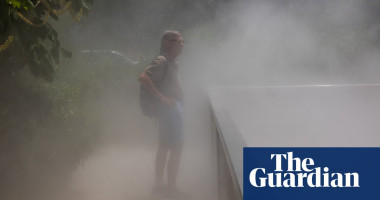Urban heat island effect making temperatures 8F hotter in 65 US cities – study
Nearly 34 million people in those cities, or 15% of the US population, experiencing temperatures higher than in surrounding areas
Almost 34 million people in 65 major US cities, or 15% of the country’s population, are experiencing temperatures that are 8F higher than their surrounding areas, according to a new analysis from Climate Central, a non-profit research group.
That is largely due to built environments like parking lots and asphalt sidewalks, and a lack of trees, that contribute to what’s known as the urban heat island effect.
The research found the urban heat island effect was strongest in New York City, where the built environment can push temperatures more than 9F higher than nearby areas.
The study, which comes as extreme heat is blistering through the US, putting more than 146 million people under advisories, illustrates how many are enduring even higher temperatures due to the way their cities were built.
